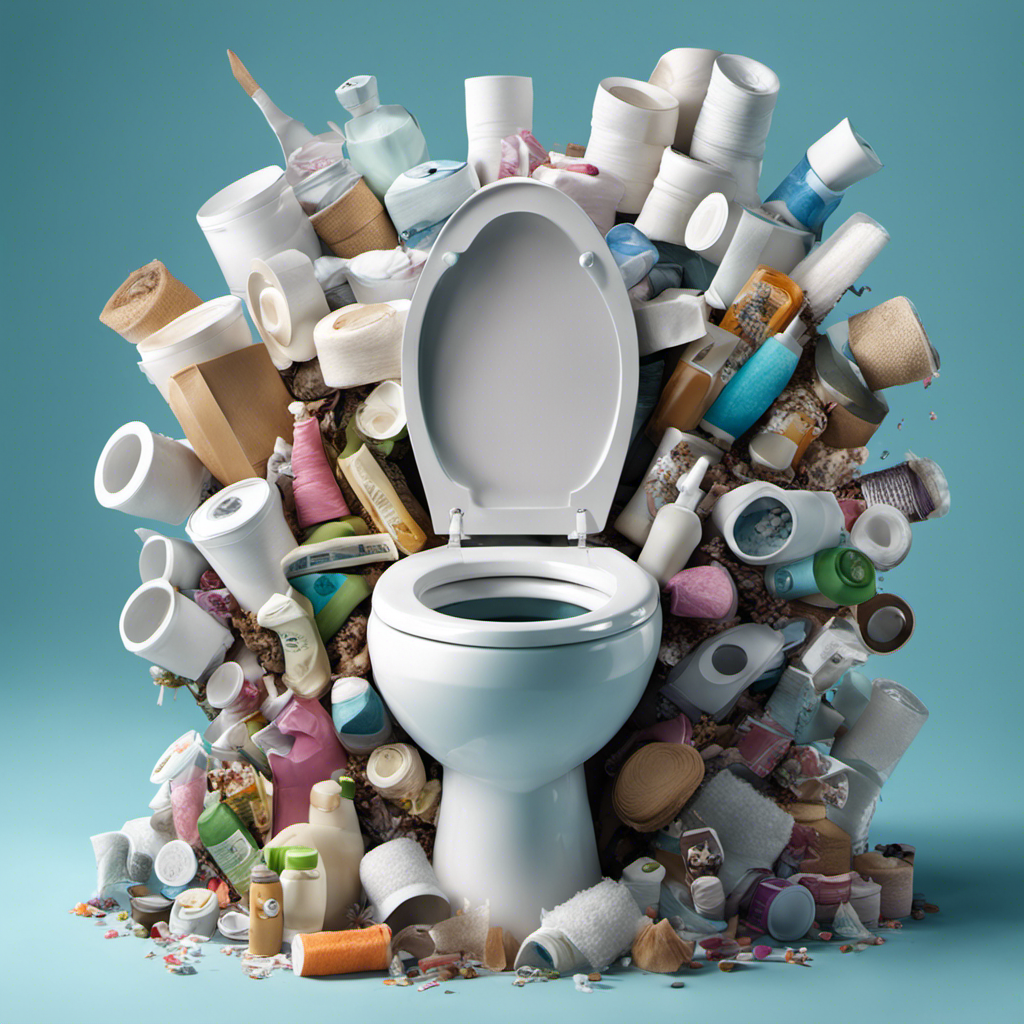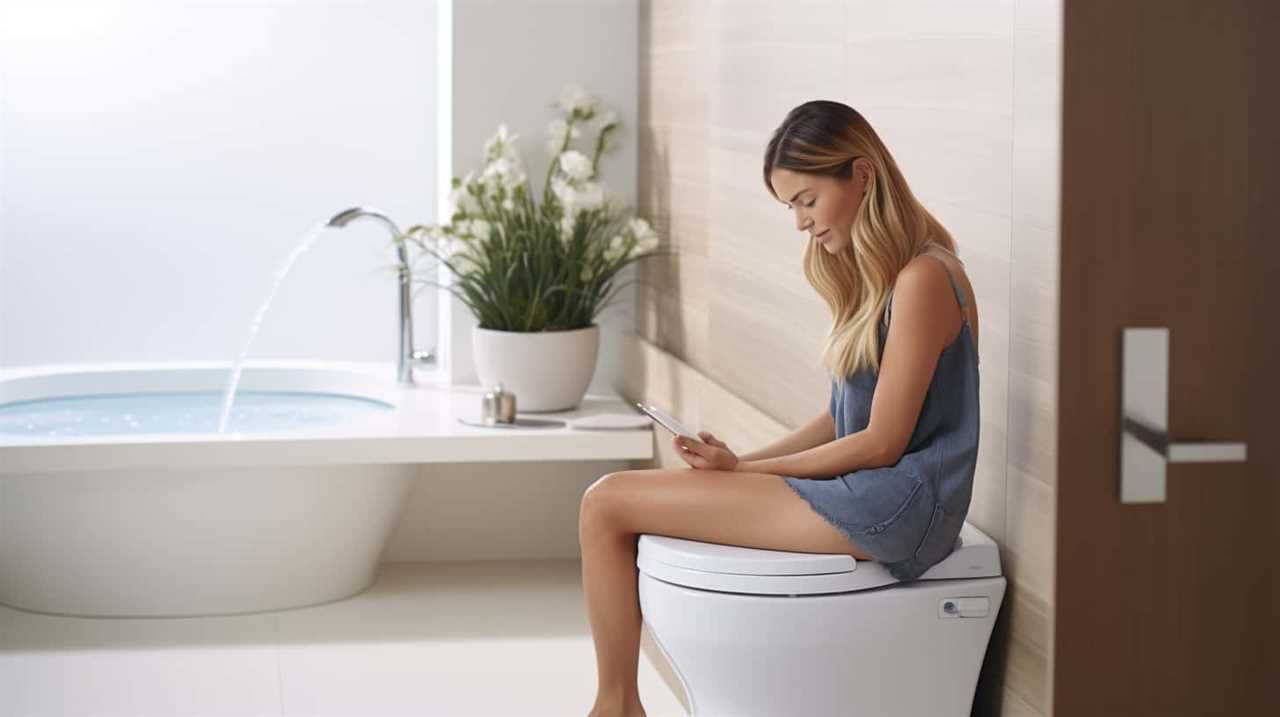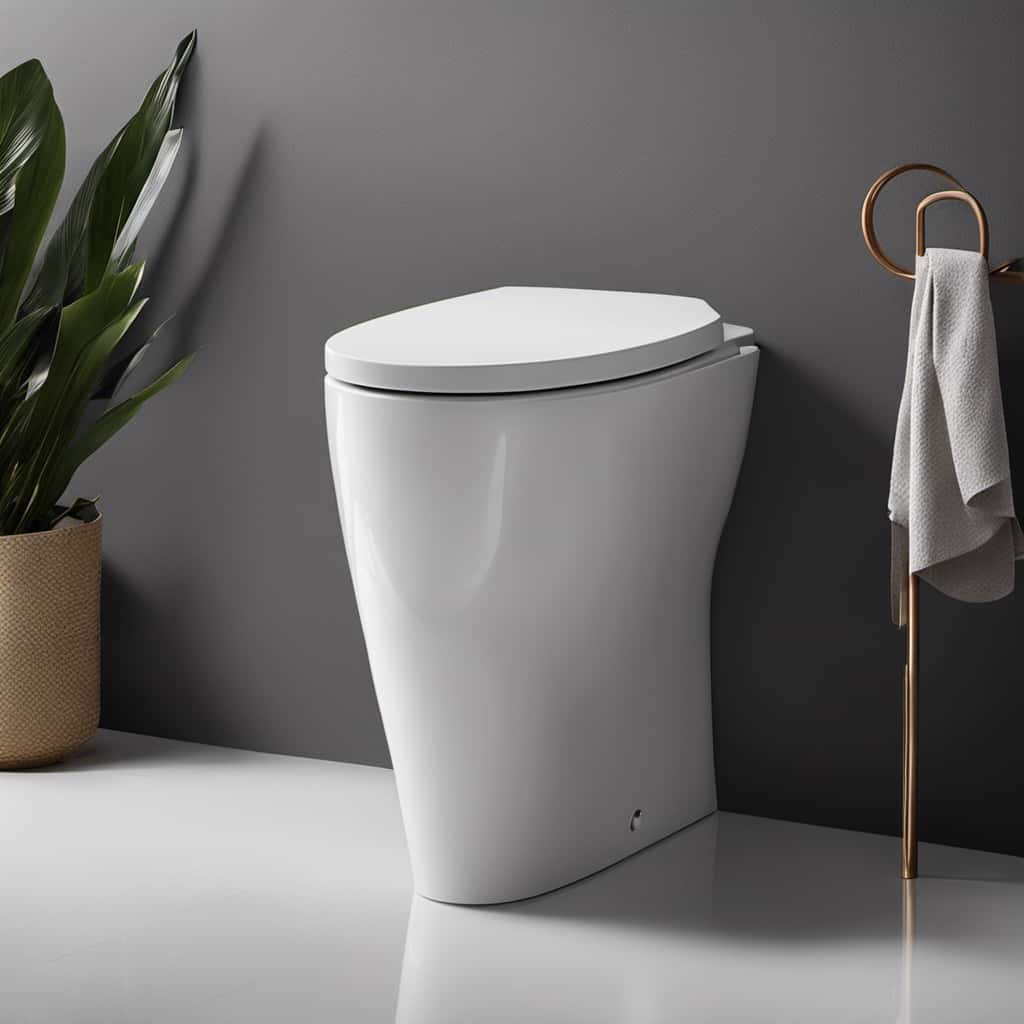Do you ever feel like your toilet has a mind of its own, constantly conspiring to ruin your day? Well, you’re not alone!
It’s frustrating when your toilet keeps clogging, causing you unnecessary stress and inconvenience.
But fear not, because in this article, we will delve into the common causes of toilet clogs, teach you how to spot the warning signs, provide tips for prevention, and even share some DIY methods for unclogging.
Say goodbye to toilet troubles once and for all!
Key Takeaways
- Flushing excessive amounts of toilet paper at once and flushing items other than toilet paper can cause toilet clogs.
- Slow drainage, water rising in the bowl, gurgling sounds when flushed, and foul odors are signs of a potential clog in the toilet.
- To prevent toilet clogs, practice proper flushing techniques, avoid flushing non-flushable items, maintain the toilet regularly, and consider installing a toilet with a larger trapway.
- DIY methods for unclogging a toilet include using a plunger to create suction and dislodge the clog, ensuring a tight seal, and continuing plunging until the clog is cleared. If DIY methods fail after multiple attempts or there are persistent toilet clogs affecting multiple drains, it’s advisable to call a professional plumber.
Common Causes of Toilet Clogs
One of the most common causes of toilet clogs is when you flush too much toilet paper at once. Toilet paper is designed to break down and dissolve in water, but if you use excessive amounts, it can accumulate and create blockages in your plumbing system.
To prevent toilet clogs, it is important to be mindful of how much toilet paper you use and to avoid flushing large quantities all at once. Another common mistake that can lead to clogs is flushing items other than toilet paper down the toilet, such as sanitary products, baby wipes, or paper towels. These items do not dissolve easily and can cause serious blockages.
To keep your toilet clog-free, remember to only flush toilet paper and avoid making these common toilet clogging mistakes.
Signs of a Potential Clog in Your Toilet
If you notice any slow drainage or water rising in the bowl, it’s a sign that your toilet may be clogged. Identifying these warning signs early can help prevent a major plumbing issue.
Slow drainage occurs when there is a partial blockage in the pipes, causing water to take longer to flush away. Water rising in the bowl indicates a more severe clog, where the water cannot flow down the drain properly.
To prevent toilet clogs, there are a few tips you can follow. First, avoid flushing anything other than toilet paper down the toilet. Items like wipes, feminine hygiene products, and paper towels can easily clog the pipes.
Second, consider installing a toilet with a larger trapway, which allows for better water flow.
How to Prevent Toilet Clogs
To prevent toilet clogs, you can follow a few simple tips:
-
Regular Toilet Maintenance: Keep your toilet clean and free from debris by using a toilet brush and cleaner. This helps prevent buildup that can lead to clogs.
-
Proper Flushing Techniques: Teach everyone in your household the importance of flushing only toilet paper and human waste. Flushing items like baby wipes, facial tissues, or feminine hygiene products can cause clogs.
-
Water Pressure Check: Ensure that the water pressure in your toilet is not too high or too low. High water pressure can cause clogs, while low water pressure may not be enough to effectively flush waste.
DIY Methods for Unclogging a Toilet
Using a plunger is an effective DIY method for unclogging a toilet. Before you grab your plunger, it’s important to understand some basic techniques and tips to ensure success. Here’s a handy table outlining the steps for using a plunger properly:
| Step | Action |
|---|---|
| 1 | Place the plunger over the drain hole, ensuring a tight seal. |
| 2 | Push down firmly and then pull up quickly to create suction. Repeat this motion several times. |
| 3 | Check if the water starts to drain. If not, continue plunging until the clog is cleared. |
| 4 | Once the water starts to drain, flush the toilet to ensure proper flow. |
When to Call a Professional for Toilet Clog Issues
Sometimes, it’s best to call a professional when you’re dealing with persistent toilet clog issues. While there are many DIY methods for unclogging a toilet, there are certain situations where it’s better to leave it to the experts. Here are three instances when you should consider calling a professional:
-
Multiple clogs: If your toilet keeps clogging even after you’ve tried various DIY methods, it may indicate a deeper plumbing issue. A professional plumber can accurately diagnose the problem and provide a long-term solution.
-
Sewer line problems: When your toilet clogs frequently and the issue affects multiple drains in your home, it could be a sign of a blockage in the main sewer line. This requires specialized equipment and expertise to resolve.
-
Time and cost: DIY methods can be time-consuming and may not always be successful. Calling a professional can save you time and frustration. Additionally, the cost of hiring a professional plumber is often worth it when compared to potential damage caused by improper DIY attempts.
Conclusion
In conclusion, preventing toilet clogs is crucial to maintain a functional bathroom. By being mindful of what you flush and implementing preventive measures like using a plunger or a toilet auger, you can significantly reduce the chances of a clog. However, if the problem persists, it is advisable to seek professional help.
Did you know that a study found that the average American spends nearly 3 years of their life on the toilet? This statistic emphasizes the importance of keeping our toilets in good working condition to avoid unnecessary inconveniences.










